from nahuatl alaztic (or alactic) meaning slippery. This no doubt refers to the mucilaginous baba (1) common to the Mallow (2) family.
- slime
- Malvaceae. Okra is a plant in this family that is commonly known for its “slime” producing capacity.
Synonyms. Anoda hastata Cav., Sida cristata L., Anoda triloba Cav., Anoda dilleniana Cav.
Also called
Crested anoda, spurred anoda, malva, malvilla, malvarín, bimalva, malva de castilla, malva cimarrona, malva abrisca, malvavisco (marshmallow), panelita, quesitos, quesillo, amapolita azul (blue poppy), amapola silvestre (wild poppy), amapolita morada (purple poppy), amapolita (or amapola) del campo (field poppy), violeta del campo (field violet), violeta, violeta de monte (wild violet), altea, pie de gallo (crow’s foot); botón, aguatosa (Oaxaca), halachas, alachi, halache, helanche, tlachpahuatla (Nahua)(Puebla), Tsayaltsay, Tsáayal Tasai (Maya); Pax’tamac (Totonac); xicuni pogtoi (Otomí); Yaxal, muu ts’ojo (San Luis Potosí)(tenek)(Huasteco), yuatayoo (Mixtec), rewé (Tarahumara).
The alache is little known, but it is collected in the area of the Popocatépetl and Iztaccíhuatl volcanoes, and in the surroundings of Ozumba, in the State of Mexico (UNAM-DGCS-192).
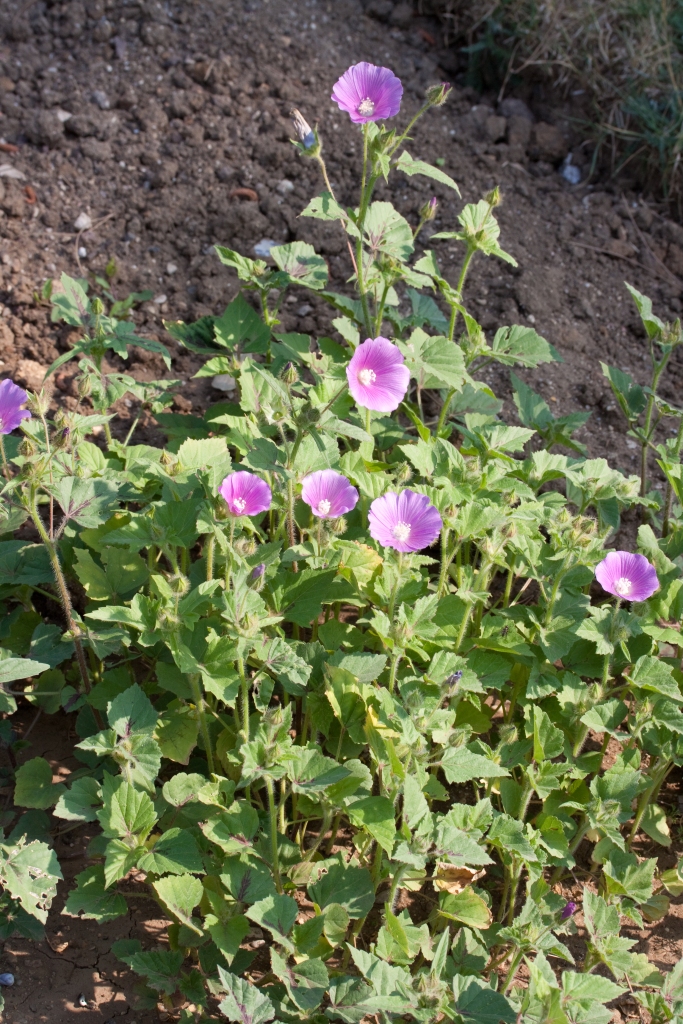
This plant is generally thought of as an agricultural weed. In its native habitat (America) it is a typical quelite that is left to flourish in the milpa (if it is of a superior quality; inferior plants are generally weeded out) but in other countries it is considered an invasive agricultural weed. In Australia it is a problem weed of cotton, peanuts, summer grain and forage crops, and pastures. It is also a plant that can be found growing on the roadside or on freshly disturbed sites.
With alache, much like various other Quelites (1), people distinguish between two main variants: (1) the “alache macho” (“male alache”), which have slender and pubescent (2) leaves, with a high fibre content, and which is not palatable; and the “alache hembra” (“female alache”) which has broader and non-pubescent leaves, a lower fibre content and a good flavour. People gather young individuals or stems and leaves of the “female alache.” When individuals are removed, the populations are directly thinned, and with such an action it could be expected that populations of this variety might be easily displaced by those of the “male alache” and eventually disappear. However, this does not occur because not all individuals of the “female alache” populations are removed and, in addition, many individuals of the “male alache” populations are eliminated during weeding.
- See Post Quillquina : Porophyllum ruderale
- hairy
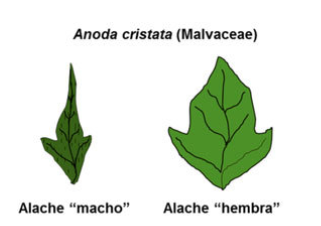

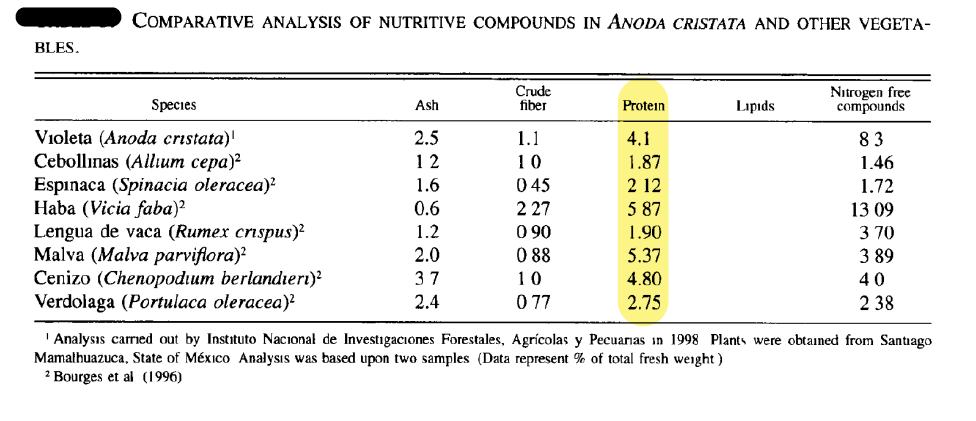
I have yet to find a detailed nutritional breakdown for this plant. The protein content has been assayed and as you can see (in the chart above) the protein content of this plant is exceptional.

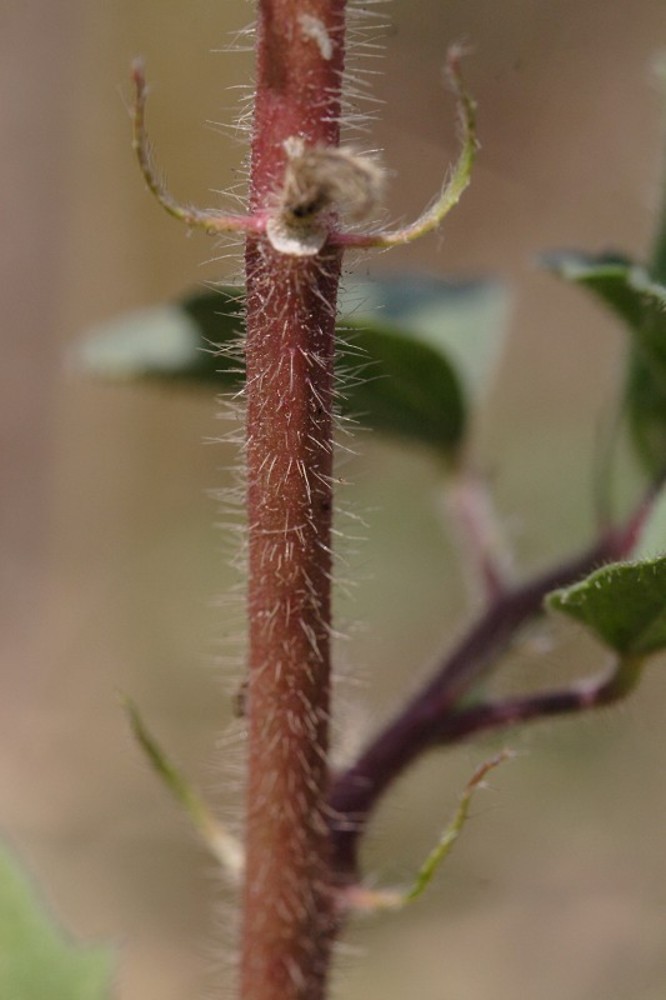
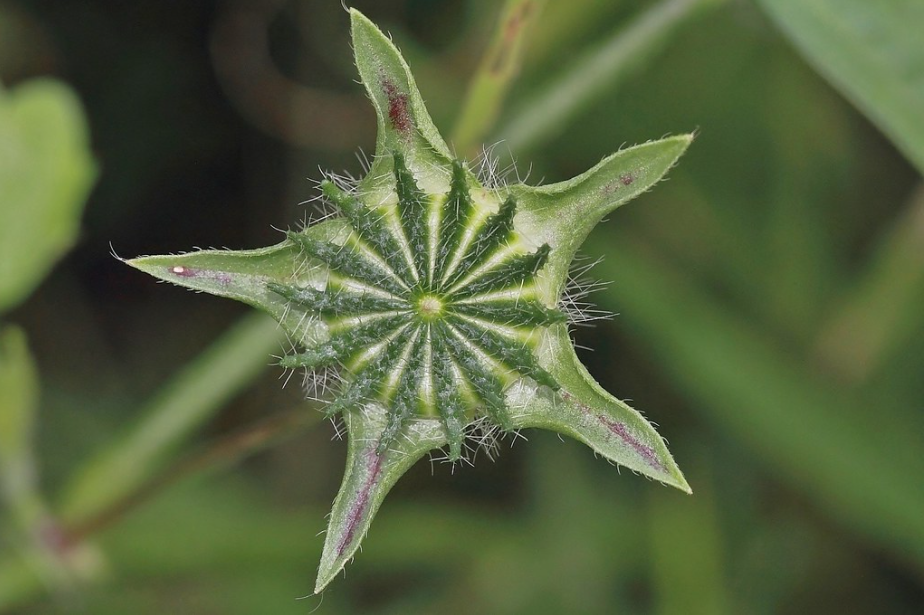
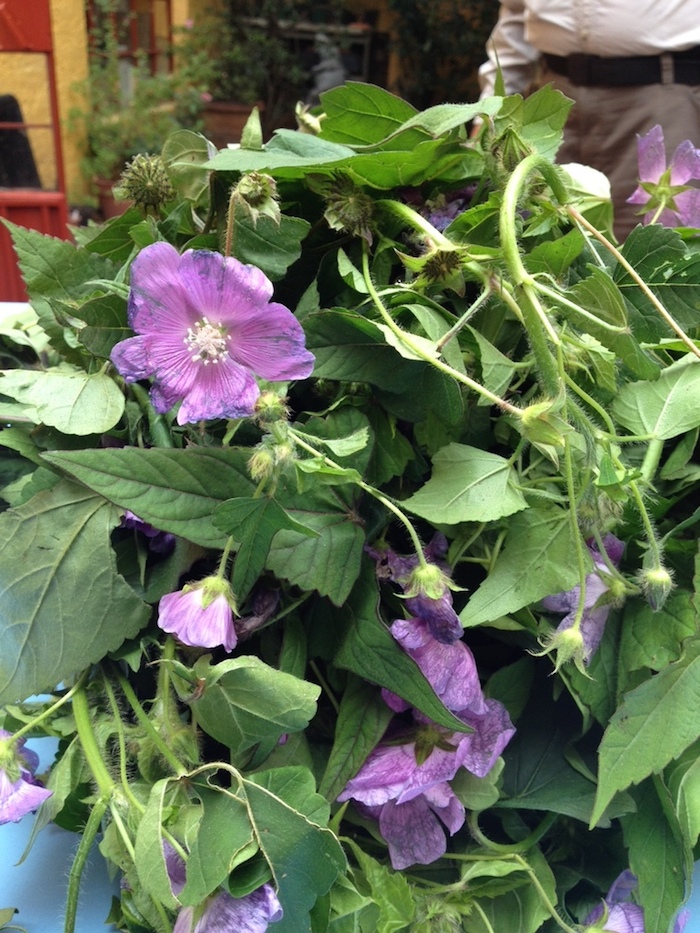
This picture gives you an idea of when the locals consider the plant ready to use.
Sopa de Alache
Ingredients:
- A bunch of alaches
- 1 small onion
- 2 cloves of garlic
- 2 sprigs of mint.
- 250 grams of zucchini
- 250 grs. green beans
- 1.5 litres water
Method
- strip the alaches from the stems and wash well to remove and debris or bugs. Remove the peduncles and pistils (the flower stalk and leaf stems and the central part of the flower)
- Place in a pot with the water. Bring to a boil with a little salt*, then add the cubed zucchini, green beans, onion, garlic and sprigs of mint.
- Season to taste and simmer for 20 – 30 minutes.
- If desired, you can add chili, salt and a few drops of lemon.
*NOTE* recipes from México often contain tequesquite (See Post Tequesquite)
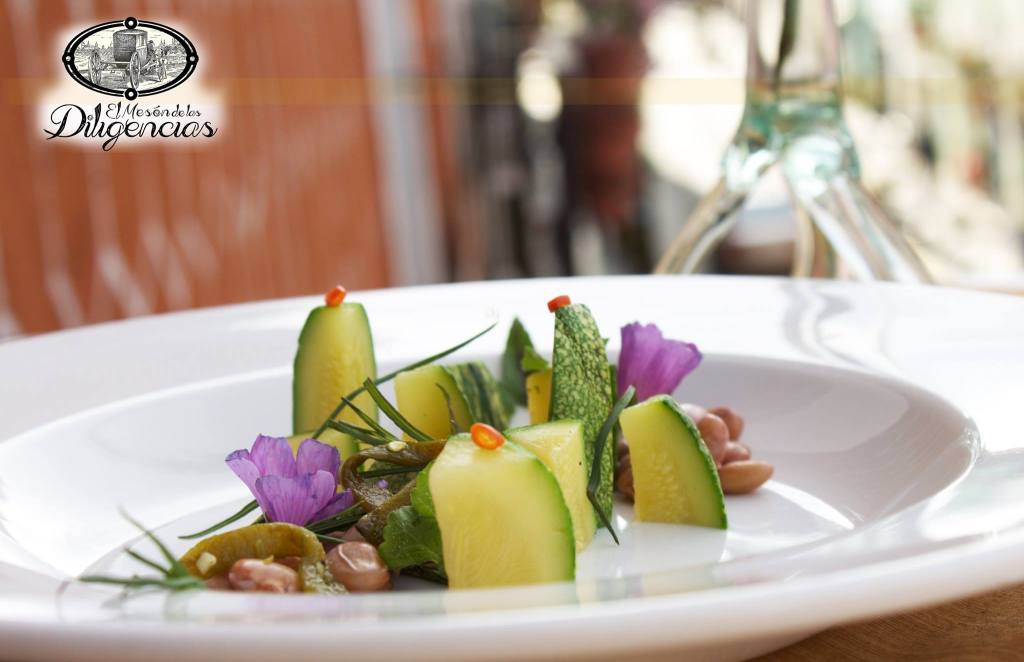
The photo above shows a “fine dining” version of alache soup. The only alache element that I can identify in the dish are the flowers. This dish could I guess (if you stretched the meaning somewhat) be termed a sopa seca or a “dry soup”; although this dish would normally contain angel hair pasta (which would absorb most of the liquid, making it “dry”). Perhaps the dish above is so “fine dining” that the liquid part of the sopa is in another jug and is poured in as part of the theatre of the restaurant.
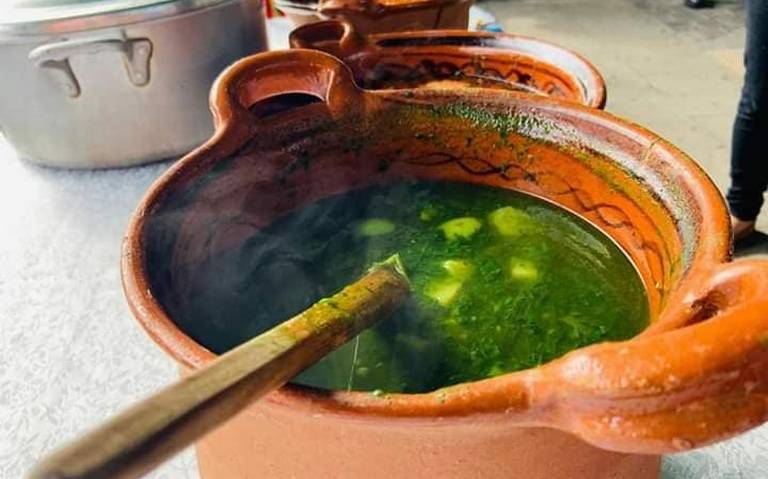
Alaches con Arroz (Alaches with rice)
- 1/3 cup of alaches soup (see previous recipe)
- 1/3 cup of rice (60g approximately)
- 1½ cups of water
- 3 teaspoons of oil
- 2 pinches of salt
Method
- Add half a cup of hot water to the rice and let it rest for 10 min.
- Drain, rinse with clean water, and drain again.
- Heat the oil and add the rice, stirring constantly until take a slightly golden colour.
- While the rice is frying, blend the alache soup until it becomes a thick and homogeneous liquid (almost a paste)
- Add the alaches, a cup of water, two pinches of salt, and stir slightly.
- Bring to a boil (over a medium heat). When it boils turn the heat down to its lowest. Cover the pot with a lid and cook for 10 minutes.
- Remove the lid and fluff the rice with a fork. There should be no liquid left in the pot. If there is cover with the lid again and keep cooking (on the lowest heat) for a few more minutes.
- Serve as an accompaniment to any meal you would normally eat with rice.
Tacos de Flor de Alache (Alache flower tacos)
Recipe adapted from Las flores en la cocina veracruzana
Ingredients: for 4 people
- 2 cups of alache flowers, without stem, peduncle, or pistil
- 1 cup tomato verde*, chopped
- ¼ white onion, minced
- 6 chiles tabaqueros verdes**, roasted
- 1 clove garlic, roasted
- 1 tablespoon of vegetable oil
- freshly made tortillas
- salt to taste
Method
- In a pot put the flowers, cover them with water, add salt and simmer until soft, drain.
- In a molcajete, grind the chiles, garlic, onion and tomato to make a salsa.
- In a saucepan, heat the oil, add the sauce and a little
salt, cook for five minutes, finish with the flowers, mix well
and remove from heat. - Serve with tortillas
*Also called miltomate or tomatillo
**Chiles tabaqueros (tobacco chiles).This is usually identified as dried serrano chile (so I supposed chiles tabaqueros verdes would be the fresh chile?)
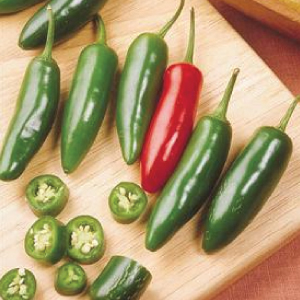

Medicinal use.
This plant is used in some central and southern states of the country for digestive and respiratory disorders, such as cough, fever, fever, dysentery, inflammation of the stomach and pulmonary affections. It is administered in the form of an infusion (tea), with the decoction of the leaves , stem and even the root being used for various conditions. It is also used against hair loss, locally applying the cooking water of the entire plant (Olivas Sánchez 1999)
This plant is used in the practices of curanderismo. It is used to treat a range of issues that can result in digestive distress known as empacho (1). Empacho is a condition that can occur due to mental/emotional/spiritual distress or solely as a result of dietary conditions and can cause a range of problems from stomach pain to chronic diarrhoea or constipation. Alache can be used as an infusion (along with chamomile) which is taken internally as needed. A decoction of the plant can be administered as an enema to aid in the treatment of empacho related symptoms. An infusion of the flowers is used against stomach or headache pain due to alcohol intake. Ethanolic extracts of alache have been studied and show promising results in the treatment of Metabolic Syndrome (2) and conditions involving insulin resistance and type 2 diabetes (Juárez-Reyes etal 2014) (Gomez-Chang etal 2017) (Mateos-Maces etal 2020) with an extract of alache being as effective as the antibiotic metronidazole when treating Helicobacter pylori. Mixing alaches with foods high in carbohydrates reduces its glycaemic index, although it should be remembered that high carbohydrate foods (rice and tamale) will still have a relatively high GL (3); that is, they should be consumed in moderation.
- Empacho is considered a form of digestive “blockage”. See Post Empacho
- Metabolic syndrome is a collection of conditions that often occur together and increase your risk of diabetes, stroke and heart disease. The main components of metabolic syndrome include obesity, high blood pressure, high blood triglycerides, low levels of HDL cholesterol and insulin resistance.
- Glycaemic Load. The glycaemic index (GI) rates carbohydrates according to how quickly they raise the glucose level of the blood. The glycaemic load (GL) rates carbohydrates according to the glycaemic index, the quality of the carbohydrates in the food and the serving size or portion size of carbohydrates. This provides a more accurate picture of the overall effect that the food product has on blood sugar levels.
There are several psychological/mental/emotional conditions that are treated with curanderismo that have no direct equivalent in modern medicine (1). These problems, bilis (2), corajes (3) or muinas (4) are treated by taking a decoction of the herb internally or by bathing with the liquid. Many other herbs may also be used in combination with alache for this purpose. Herbs mentioned as being good for this are, sauco (Sambucus mexicana), hierba dulce (Phylla scaberrima), mano de gato (Geranium seemannii), hierba del golpe (Oenothera rosea), tomate (Physalis aequata), lima chichona (Citrus aurantifolia), malva chiquita (Malva multifida ), hierba garrapata (Crusea subulata), hierba mora (Solanum americanum), escoba (Sida rhombifolia), quelite bueno (Amaranthus hybridus), quelite puerco (Amaranthus sp.), tomate de ratón (Solanum douglasii), espinoso (Sechium edule), estafiate (Artemisia ludoviciana subsp. mexicana) and rocia (Bidens pilosa)(López Sandoval 2016). Many of these plants are local medicinal herbs and are not very well known (if at all) in herbal medicine practices outside of the Americas.
- except perhaps being described as psychological pathologies.
- Bilis = bile : suppressed anger
- anger
- a more intense form of anger sickness often resulting in the expression of outward rage
It has been noted that it can be used for respiratory issues. For coughs in general a decoction of the flowers is taken, for whooping cough a decoction of the leaves is recommended (López Sandoval 2016) and has been traditionally used to lower fever. Martinez (1969) lists it as being used as an emollient (1), for treating the lungs and cases of cough or more seriously pertussis (2).
- A substance that helps soothe, soften, and increase moisture levels, especially in the skin. Emollients may be used in a lotion, cream, ointment, or gel to prevent or treat dry, rough, scaly, itchy skin and other skin problems, such as rashes or burns. They may also be used to help protect the skin against irritation. Emollients may also be given by mouth to prevent or treat constipation by moistening and softening the stool. Some of these plants can have a soothing effect on the lungs through “reflex demulcenct” action. This helps by moistening the lung/oesophagus by creating mucus (good in cases of dry cough) and soothing inflammation/irritation (some herbs do this in the urinary tract as well ie. marshmallow)
- whooping cough, a highly contagious respiratory disease caused by the bacterium Bordetella pertussis (occasionally Bordetella parapertussis). Infants less than 6 months of age are at greatest risk of complications (apnoea, severe pneumonia, encephalopathy) and are most commonly infected by spread from family members. Patients are infectious just prior to and for 21 days after the onset of cough, if untreated
For female conditions such as dysmenorrhea (1) and menorrhagia (2) parteras (3) might use a decoction of the leaves has been used or the entire plant was used for cases of sterility.
- painful menstrual periods caused by uterine contractions
- menstrual periods with abnormally heavy or prolonged bleeding
- traditional midwifes
Peña (2005) notes that the alache was (or maybe still is) used as a treatment for coughs, hair loss, stomach inflammation, poor appetite, fever, measles, and deafness.
Balick (1999) mentions that in El Salvador the flowers of this plant were crushed and put in the ears for the treatment of deafness.
References.
- Balick, M.J. New plant sources for food and drugs from the New York Botanical Garden Herbarium. By Siri von Reis and Frank J. Lipp, Jr.. Brittonia 36, 44 (1984). https://doi.org/10.2307/2806289
- Blaesser, Jean Margaret, “Curanderismo and Health Delivery Services” (1974). Dissertations and Theses.
Paper 2046. https://doi.org/10.15760/etd.2045 - Cadena-Gonzalez, A. L., Sørensen, M., & Theilade, I. (2013). Use and valuation of native and introduced
medicinal plant species in Campo Hermoso and Zetaquira, Boyacá, Colombia. Journal of Ethnobiology and
Ethnomedicine, 9, [23]. https://doi.org/10.1186/1746-4269-9-23 - Casas, A., Vázquez, M. del C., Viveros, J. L., & Caballero, J. (1996). Plant management among the Nahua and the Mixtec in the Balsas River Basin, Mexico: An ethnobotanical approach to the study of plant domestication. Human Ecology, 24(4), 455–478. doi:10.1007/bf02168862
- https://enciclovida.mx/especies/165161-anoda-cristata (last accessed 14/10/20)
- Estrada-Castillón, E., Soto-Mata, B. E., Garza-López, M., Villarreal-Quintanilla, J. Á., Jiménez-Pérez, J., Pando-Moreno, M., Sánchez-Salas, J., Scott-Morales, L., & Cotera-Correa, M. (2012). Medicinal plants in the southern region of the State of Nuevo León, México. Journal of ethnobiology and ethnomedicine, 8, 45. https://doi.org/10.1186/1746-4269-8-45
- Gomez-Chang E, Uribe-Estanislao GV, Martinez-Martinez M, Gálvez-Mariscal A, Romero I. Anti-Helicobacter pylori Potential of Three Edible Plants Known as Quelites in Mexico. J Med Food. 2018 Nov;21(11):1150-1157. doi: 10.1089/jmf.2017.0137. Epub 2018 Jul 23. PMID: 30036109.
- https://enciclovida.mx/especies/165161-anoda-cristata
- Juárez-Reyes K, Brindis F, Medina-Campos ON, Pedraza-Chaverri J, Bye R, Linares E, Mata R. Hypoglycemic, antihyperglycemic, and antioxidant effects of the edible plant Anoda cristata. J Ethnopharmacol. 2015 Feb 23;161:36-45. doi: 10.1016/j.jep.2014.11.052. Epub 2014 Dec 6. PMID: 25490313.
- Lesterloon Sánchez Trinidad : Las flores en la cocina veracruzana : Cocina Indígena y Popular : Primera edición en Cocina Indígena y Popular, 2017 : ISBN: 978-607-745-787-9
- López Sandoval, Dr. José Antonio : 2016 : Herbolaria Apuntes (Herbalism Notes) : Unidad de Aprendizaje: Herbolaria (Optativa) (Learning Unit: Herbalism (Optional) : Facultad de Ciencias Agrícolas Ingeniero Agrónomo Industrial : Universidad Autonoma del Estado de México
- Martinez, Maximino. 1969. Las Plantas Medicinales de Mexico
- Mateos-Maces, L.; Chávez-Servia, J.L.; Vera-Guzmán, A.M.; Aquino-Bolaños, E.N.; Alba-Jiménez, J.E.; Villagómez-González, B.B. Edible Leafy Plants from Mexico as Sources of Antioxidant Compounds, and Their Nutritional, Nutraceutical and Antimicrobial Potential: A Review. Antioxidants 2020, 9, 541.
- Olivas Sánchez, Martha Patricia. (1999) : Plantas medicinales del Estado de Chihuahua, Vol 1 : Autonomous University of Ciudad Juarez : Centro de Estudios Biológicos, Dirección General de Investigación y Posgrado : ISBN 9687485825
- Peña, Devon G. (2005) : PRELIMINARY LIST OF BOTANICAL SPECIES GROWN AT SOUTH CENTRAL COMMUNITY GARDEN : Department of Anthropology – University of Washington : Tezozomoc : Campesinos del Sur Centro de Los Angeles
- Rangel-Landa, S., Casas, A., García-Frapolli, E. et al. Sociocultural and ecological factors influencing management of edible and non-edible plants: the case of Ixcatlán, Mexico. J Ethnobiology Ethnomedicine 13, 59 (2017). https://doi.org/10.1186/s13002-017-0185-4
- Rendon, Beatriz & Bye, Robert & Núñez-Farfán, Juan. (2001). Ethnobotany of Anoda cristata (L.) Schl. (Malvaceae) in central Mexico: Uses, management and population differentiation in the community of Santiago Mamalhuazuca, Ozumba, State of Mexico. Economic Botany. 55. 545-554. 10.1007/BF02871717.
- UNAM-DGCS-192 Bulletin : LOS QUELITES, CON ALTO VALOR NUTRIMENTAL: Ciudad Universitaria. : 11:00 hs. March 24, 2016 (last accessed 19/10/20)

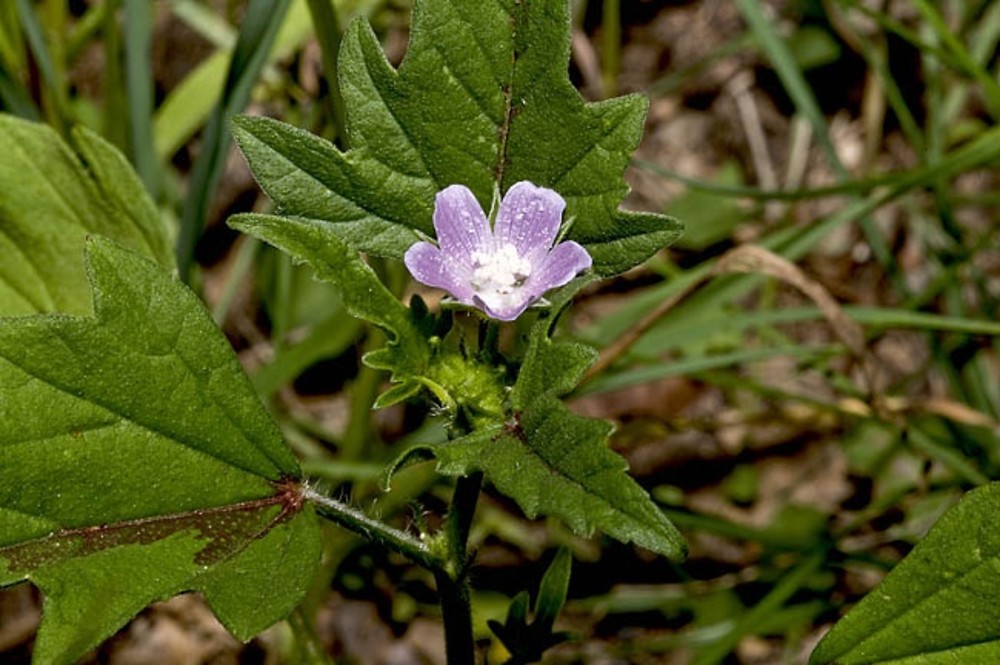
I have grown this only once, but male and female seem to be the same plant. The early growth fits your description of female. Once it starts flowering and gets tall, the leaves are increasingly “male” looking.
LikeLike
Greetings Barbara. Perhaps the variants are dependant on the microclimate of the plant. The quality of the soil, access to water and shade/sunlight/ambient temperature etal may be responsible for the particular variants. I do not mean to say that there are two varieties of plant, one male and one female. These terms are just used to show preference for the more edible (or I should say leafy and palatable) plants. Alas I have not been able to grow this plant (haven’t had much luck with mallows either for some reason) although it (and mallows) are a readily found “weed” where I am. You can learn a lot about a plant if you nurture it from seed to fruit.
LikeLike